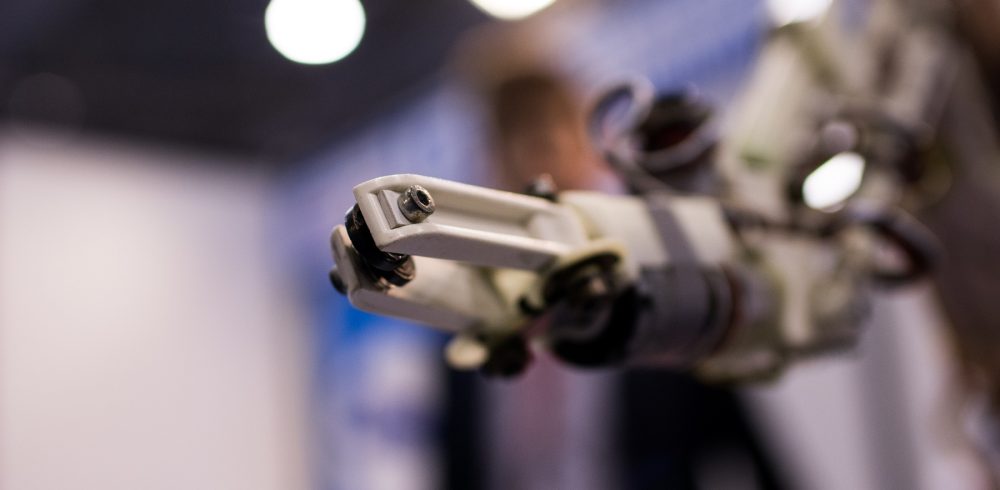Industrial robot creators are reaping the rewards of the disruptive nature of 3d printing for production, or additive manufacturing (AM). These include time savings, costs savings and design freedoms, which, for their ever-increasing pool of customers, can only be “a good thing.”
Customising and Competition
The robotics manufacturing field is becoming increasingly competitive, driving engineers to focus on enhancing versatility, accuracy, longevity and performance. The use of AM now extends beyond the realms of prototyping and tooling, and polymers are being designed for real world applications; among them materials believed to boost robotic performance and efficiency.
Customizing designs in accordance with customer requirements is now less cost-prohibitive thanks to the eradication of tooling for complex components, especially for low(ish) numbers of parts. One US-based robotics manufacturer making pipeline inspection robots has suggested that parts produced through AM are working out at around 1000 times cheaper than using injection moulding.
Applications
Robust, temperature resistant polymer materials can be used in end of arm tooling (EOAT). With an increase in organic forms, particularly for manufacturing robots performing human tasks where the complexity of parts sets challenges for both design and manufacture, 3D printing has enabled not only lightweighting of arm components, but also design freedoms like never before. From nests to finger simulants and claws, geometrically advanced EOAT is achievable, with a bonus of increasing machine longevity and efficiency. Furthermore, spare parts for when EOAT wears out are cheaper.
Advanced polymers offering dynamic stability also come into their own when it comes to creating housings for electrical components, sensors and cameras. Complex, customised cable management systems requiring multiple tools for production can now be produced in one piece without compromising structural integrity.
On-line retailer and warehousing specialists Ocado have been capitalising upon the opportunities provided by polymer AM. They recently announced that their new 600 Series robot had over 300 parts created using HP’s Multi Jet Fusion 3D printing technology. The result is a lighter, more energy efficient, cheaper robot, in keeping with Ocado’s ethos of reducing overall costs of their robot grids in micro-fulfilment centres.
Technologies
Industrial plastics AM technologies – those specifically designed to produce production parts with engineering-grade materials, include multi jet fusion and selective laser sintering (both offering medium to large parts in nylon and nylon composites); and Carbon Digital Light Synthesis™ (for small, very detailed parts in an array of resins and rubbers). These technologies deliver tough, functional components in light, end-use materials at volume. These technologies also diminish layering, resulting in less finishing requirements.
An automated future
“Additive manufacturing is reducing costs and enabling complex customisation at levels only recently imagined,” says Leonie Hilsdon, Group Marketing Manager for Paragon Rapid Technologies Ltd, a North East based manufacturing solutions provider. “We’ve seen a significant increase in production orders for robot parts in the last six months.”
The evolution of 3D printing technologies from prototyping to manufacturing is having an enormous impact on the robotics product development cycle. And on the numbers of industrial robots on the order lines. We’re now seeing robots with 3D printed parts running production lines for 3D printed parts for robots.
Manufacturing & Engineering Magazine | The Home of Manufacturing Industry News















